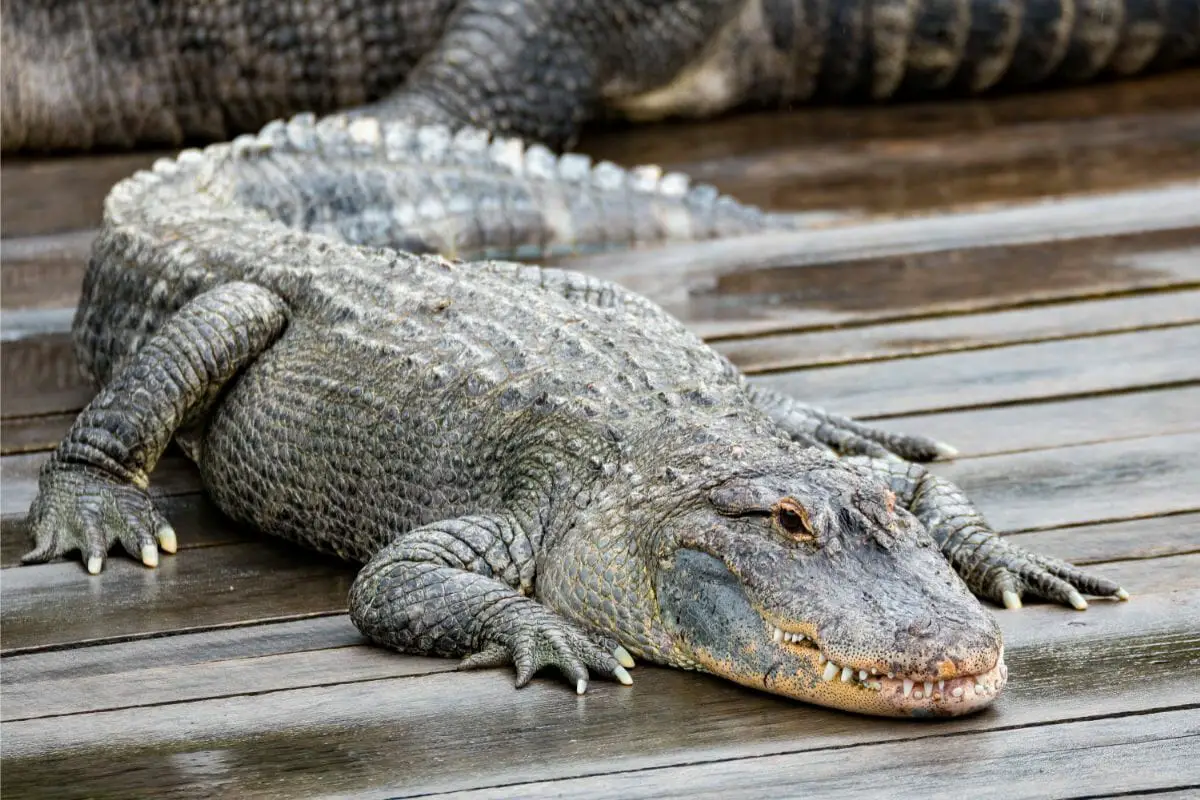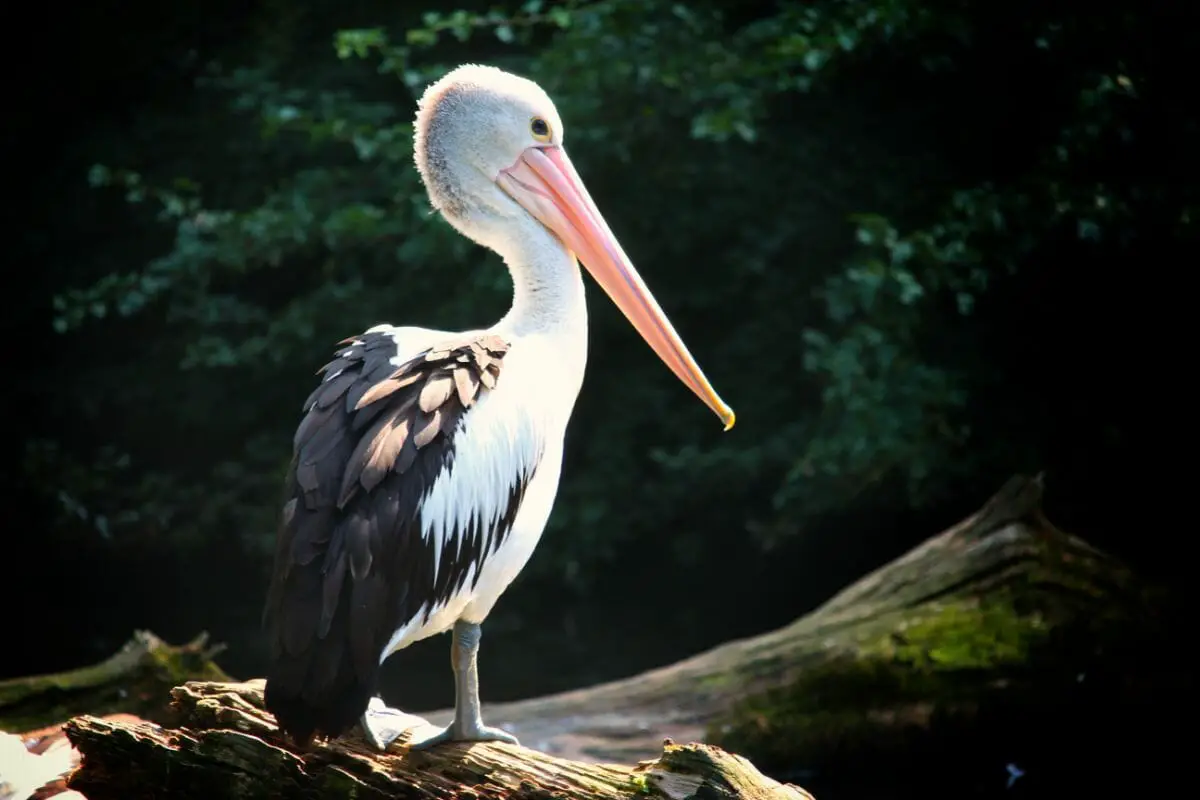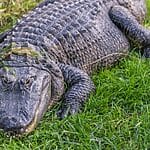Freshwater is far from just an essential resource for humans; it is a home and a habitat to hundreds and thousands of animals and creatures, and the incredible variety of beings that call freshwater home is truly incredible.

Want to learn more about the types of animals that live in freshwater? We have put together all you need to know!
Some of the most interesting freshwater animals include:
Alligators
Alligators are one of the largest reptiles on Earth, and they can be found living in both fresh and saltwater.
They are often confused with crocodiles because they share many characteristics with other members of this family, but there are actually a number of differences between the two types of creatures, including size, snout shape, color and pattern, and the power of the bite.
Alligators are often considered dangerous due to their size, but they are actually quite docile when compared to some other large reptiles.
Pelican
Another popular freshwater creature is the pelican. These birds are native to Africa, Asia, Australia, and South America, and the creature has been around since prehistoric times: today there are over 20 different species of these birds across the globe.
Pelicans are very intelligent, social birds that spend much time fishing and hunting.
Sea Lion
The sea lion is another animal that lives in freshwater, and these marine mammals are similar to seals in appearance, as well as being closely related to otters.
Sea lions are also known as pinnipeds, which means “fin-footed”, and they belong to the order Carnivora.
This marine mammal spends its life at the ocean’s surface, where it feeds on fish and squid.
However, sea lions do not always stay near the shoreline, and they will venture out into the open waters if necessary.
There are two main kinds of sea lions, including the California sea lion and the Steller sea lion.
Crane
A crane is technically defined as being any bird that stands up straight on two legs, and there are a number that reside in freshwater environments.
Cranes are native to Europe, Asia, and North America, and they are among the tallest flying birds in the world.
Cranes mainly eat seeds, insects, and small fish, and they use their long necks to reach food high above them and are usually solitary, although they may gather in flocks during migration or breeding season.
Otter
An otter is a member of the weasel family, and these aquatic mammals are native to Eurasia and North America.

Otters have rounded bodies, short tails, webbed feet, and pointed ears.
They feed on fish, mollusks, crustaceans, amphibians, and even small rodents.
These animals are highly sociable, and they tend to form groups called colonies.
The groupings are made up of several individuals, and they remain together throughout the year.
Hippopotamus
Hippopotamuses are curious creatures, and they are one of the most unique freshwater animals.
Hippopotamuses are native to Africa and Asia, and they spend their days grazing in shallow waters or even rivers.
Hippos are herbivores, meaning that they only eat plants. Their diet consists mostly of grasses, leaves, roots, and tubers.
Hippos are very social animals, and they live in herds consisting of anywhere from six to 200 hippos.
There are many reasons why hippos form such large groups, including protection against predators, finding mates, and keeping warm.
Swan
Swans are native to Europe and Asia, and they are one type of waterfowl that can be found in freshwater.
Swans are beautiful creatures, with their white plumage and black wings.
They are omnivorous, meaning that they eat both plant material and meat.
Swans are monogamous, and they often mate for life. They are extremely territorial, and they defend their territory by attacking other swans. Understanding the distinct behaviors within different types of swans can bring light to variations in their mating habits and territorial nature.
Salmon
Salmon are fish that live in freshwater, and they are native to the Pacific Ocean.
Salmon are anadromous (meaning that they migrate upstream to spawn), and they spend their entire lives in the ocean.
This makes salmon some of the longest-living vertebrates in the world.
Salmon are carnivorous, meaning that they feed on other fish and small sea creatures that they discover en route.
When they first hatch, salmon swim downstream to find suitable places to lay eggs.
After laying the eggs, the female salmon returns to the ocean to continue her life cycle.
The salmon’s lifespan depends on the species, but they can live up to 30 years.
Pike
Pikes are members of the pike family, which includes carp, catfish, and eels.

Pikes are native to Europe and North America, and there are over 100 different types of pike.
Pikes are bottom-feeders, meaning that they eat almost exclusively at the bottom of freshwater lakes and ponds.
They are also known to eat crayfish, frogs, snails, worms, and insects; pikes are aggressive hunters, and they will attack anything that comes near their nests – this is one fish that is not picky about what they eat!
Osprey
Ospreys are birds of prey that belong to the hawk family, and they are native primarily to North America.
Ospreys are powerful flyers, and they hunt by diving into the water and catching fish with their talons.
They are solitary, and they typically nest alone, building their nests out of sticks, twigs, mud, and feathers.
In addition, some ospreys may also use abandoned bird nests for their homes. Ospreys have a long lifespan, and they can live up to 50 years.
Flamingo
Flamingos are native to South America, Central America, and northern Australia, and are easily identified thanks to their distinctive webbed feet, pinkish legs, and bright red bill.
They are considered to be gregarious birds, and they live in flocks consisting of hundreds or thousands of individuals.
Flamingos feed mainly on aquatic plants, but they also eat crustaceans, mollusks, insect larvae, and even small fish.
Flamingos are highly migratory, and they travel great distances throughout the year. During migration, they stop to rest and drink along the way.
Final Thoughts
Freshwater animals are fascinating because they are so diverse; each animal has its own unique characteristics, and each one plays a role in maintaining healthy ecosystems.
The next time you go fishing or head out into nature, make sure to keep your eyes peeled for a chance to spot these amazing creatures!








